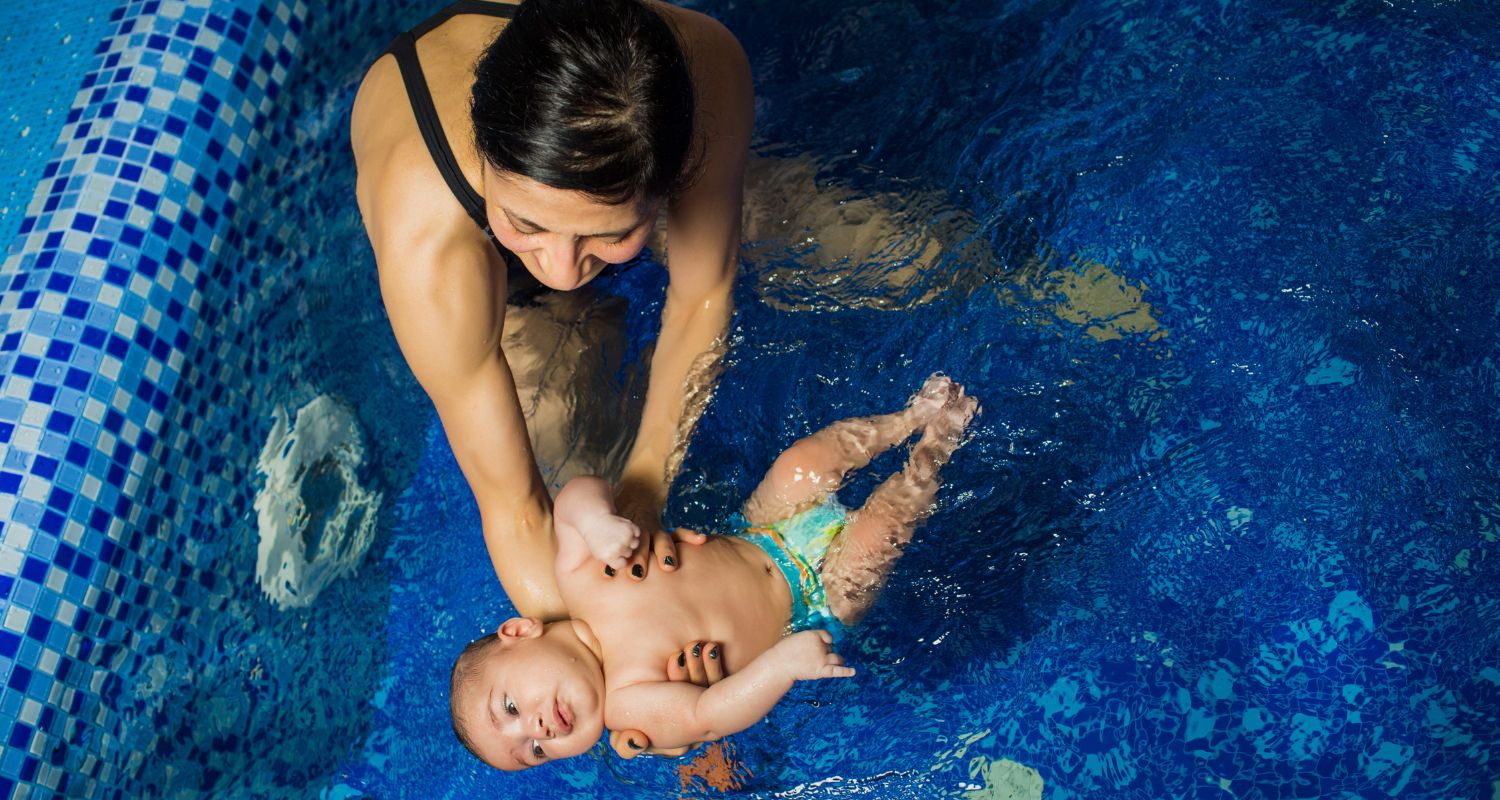There’s something magical about seeing a baby’s wide-eyed wonder as they experience water for the first time. Introducing babies to the water not only provides a fun and engaging activity but also helps them develop essential water safety skills.
In time for the summer heat, let’s explore practical tips and techniques to get babies accustomed to water, teach them not to be scared, and ensure their safety while enjoying water activities.
Baby Swimmer Classes
If baby swim classes are offered near you, I highly recommend them. Since most of these classes let you participate with your baby, it’s a great bonding experience and a trained swim teacher will guide you through different exercises and techniques in a sequence that makes it easier for your child.
If these classes aren’t an option, then follow my advice below for a great experience.
Getting Babies Accustomed to Water
Start early and take it slow
Begin the water introduction journey early, ideally between 6 to 12 months, when babies are more receptive to new experiences. Start with short, relaxed sessions and gradually increase the duration as they become more comfortable. If it’s an option, head to a local heated pool, as it will be easier for babies to feel at ease in tempered rather than cold water.
Gentle water play and splashing
Engage in gentle water play, such as pouring water over their hands and feet or allowing them to splash in shallow water. This helps babies get familiar with the sensation of water and builds positive associations.
Gradual water submersion
Slowly introduce water submersion by pouring warm water over their shoulders, back, and eventually their head. Always ensure their comfort and readiness, and never force them into full submersion.
Teaching Babies Not to Be Scared
Build trust and comfort
Create a nurturing and supportive environment by being close and maintaining eye contact with your baby. Hold them securely and speak to them soothingly to help build trust and alleviate any fears. Always explain in simple terms what you are doing together and what will happen next. Even if you don’t think they understand your words, they understand your intent.
Engage in water play with toys and games
Use age-appropriate water toys, like floating ducks or colorful cups, to engage babies in playful activities. This helps divert their attention and distracts them from any anxieties they may have.
Familiarize babies with water sounds and sensations
Allow babies to hear the sound of water running, splashing, and gently pour water over their skin to familiarize them with different water sensations. Singing songs or playing gentle music can also create a relaxing atmosphere.
Floating Techniques for Babies
Supported floating on their backs
Practice holding your baby securely on their back while supporting their head and neck. This allows them to experience the sensation of floating and helps build confidence in the water.
Gentle movements and kicking in the water
Encourage gentle kicking motions by supporting their body under their arms and letting their legs move freely. This helps babies understand the concept of movement in the water.
Use of flotation devices designed for babies
Consider using specially designed flotation devices like swim vests or float suits to provide additional support and buoyancy. These aids can assist babies in maintaining a comfortable and safe floating position.
Introducing Babies to the Water – Safety
Constant supervision
Always supervise babies closely when near or in water, even in shallow pools or bathtubs. Never leave them unattended, and ensure that they are within arm’s reach at all times.
Swim in designated baby-friendly areas
Choose swimming pools or water bodies that have appropriate safety measures and are designated for young children. These areas often have shallow sections, gentle slopes, and lifeguards to ensure a safe environment.
Teach basic water safety rules
Even at a young age, it’s important to introduce basic water safety rules to babies. Teach them to never enter the water without an adult present, to avoid running near the pool, and to understand the importance of listening to instructions.
Introducing babies to the water is an exciting and rewarding experience. By following these practical tips, you can help your little one become comfortable, confident, and safe in the water. Remember to start early, take it slow, and create a positive and nurturing environment. With patience, gentle guidance, and constant supervision, you can foster a love for water activities and lay the foundation for a lifetime of water safety.
Next, check out my article for fun-filled activities for your toddler come rain or shine
Until next time, Tania xx

